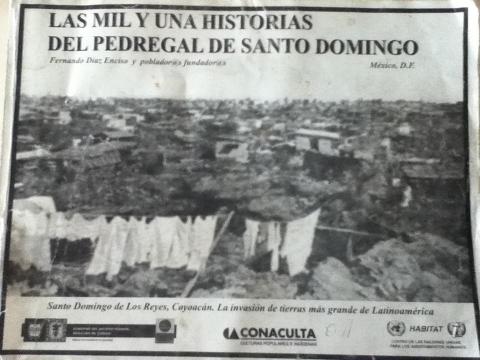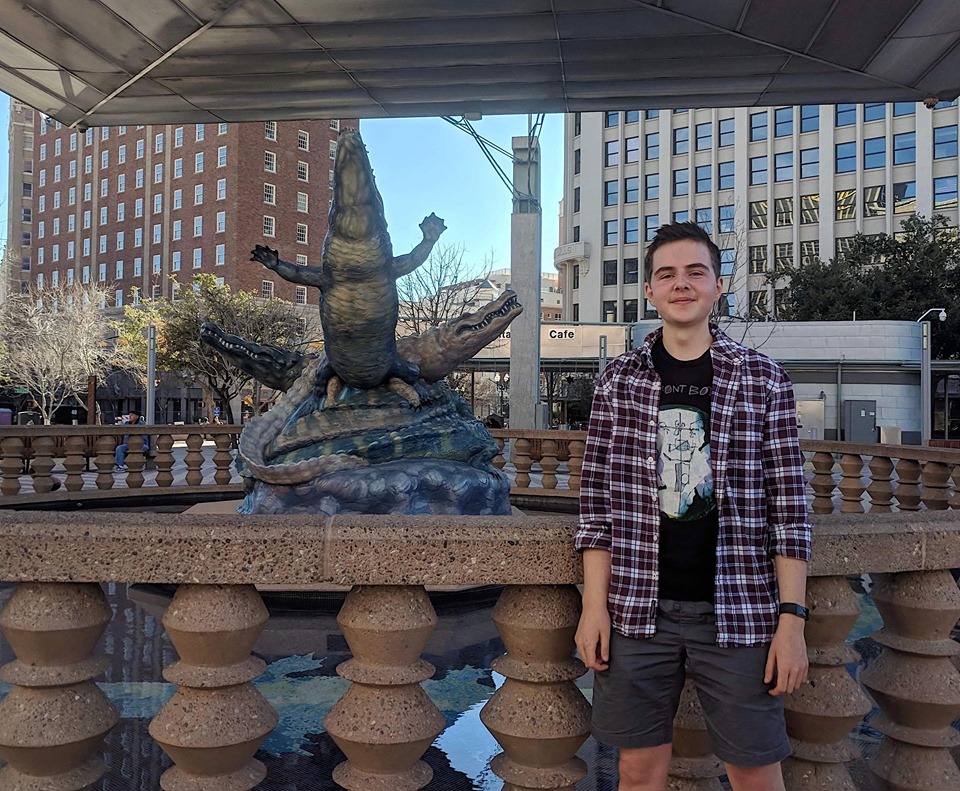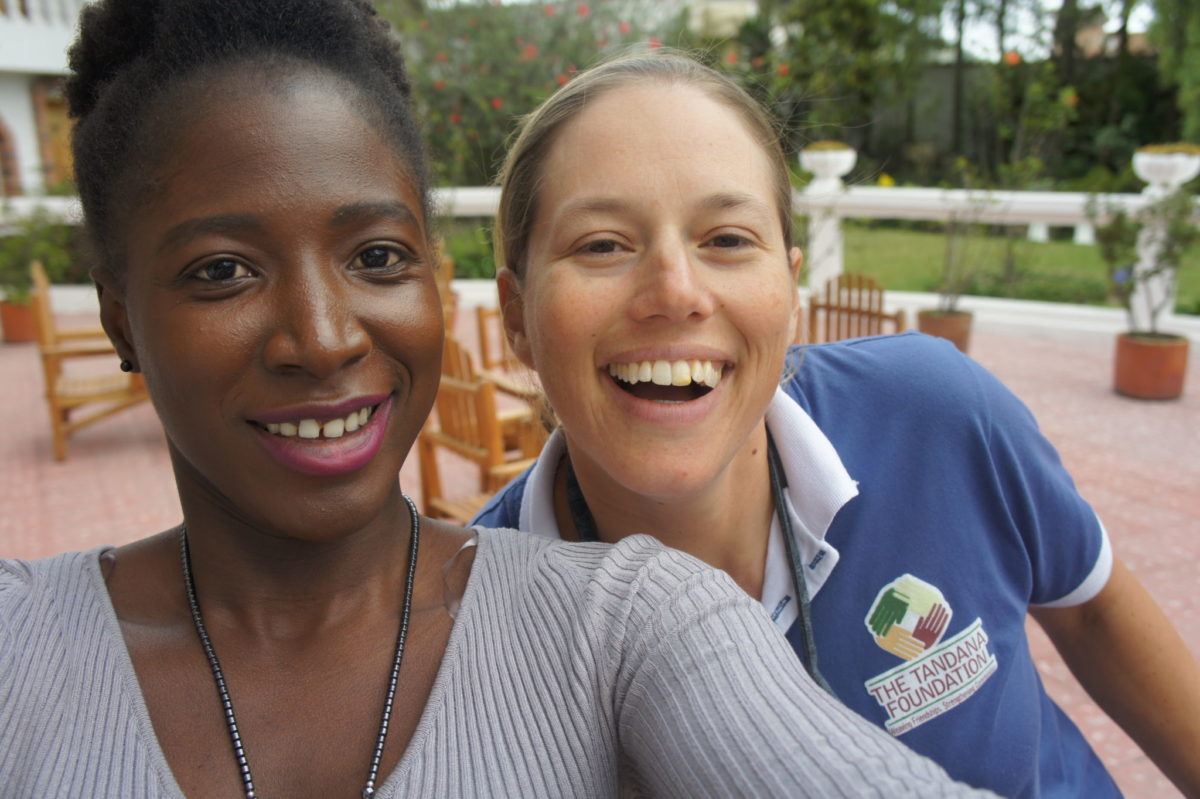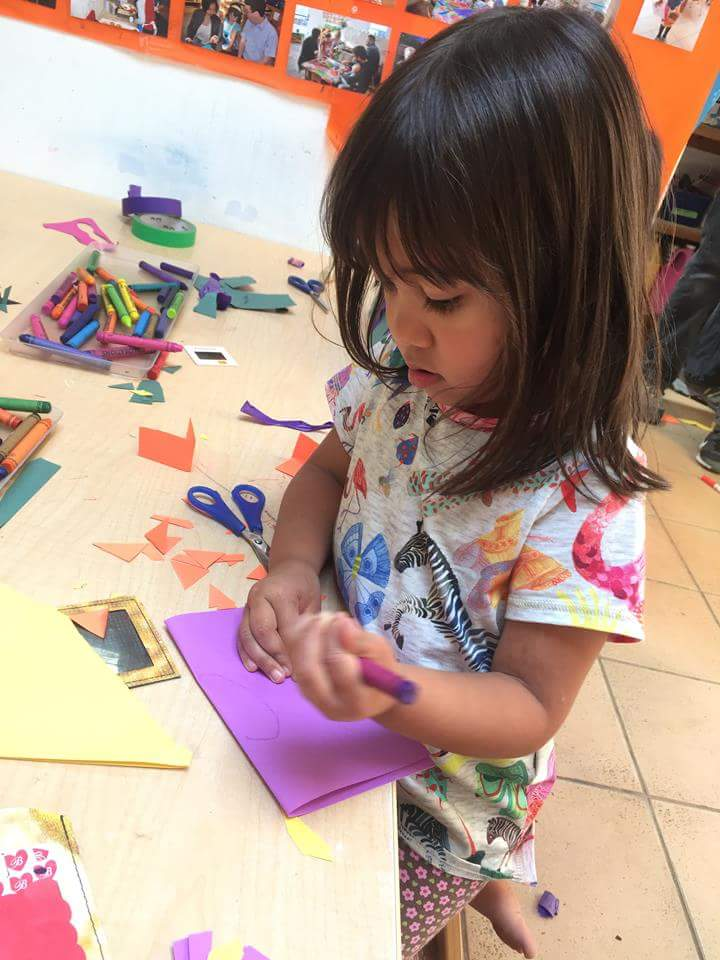Working as an English teacher for an agency here in Mexico City, I am exposed to an entirely different class of people. I live and am doing research in a working-class, squatter community. Like many other neighborhoods in Southern Mexico, people here have built their own homes and businesses and–because they settled here without paperwork–the original settlers (and the families of these settlers) never had to pay rent. Even without this expense, however, my neighbors are always working; performing hard labor such as construction, and carrying heavy tubs of oil and water to people’s homes, or performing service work outside of their homes. Santo Domingo, my community, is one of the most densely populated neighborhoods in Mexico City. I awake most mornings to Don Arturo’s rooster and the trucks with prerecorded messages that sell “refrigeradores, lavadoras, estufas…” and fall asleep to party music from street celebrations and quinceaneras. The neighborhood is large and my street is long but it seems as though most people know each other, despite there being some students and foreigners who have recently landed in the neighborhood for its close proximity to the university.
Working for the English language agency, EFA, is a much different experience. I work in various upper-class neighborhoods in Mexico City such as colonia Polanco or colonia Navarte. My students are bankers, professional campaigners, and those who need to study for the Test of English for International Communication (TOIEC) in order to become internationally competitive. In Polanco, the air and streets seem cleaner. People do not stop and chat like they do in Santo Domingo, they walk briskly to their English classes or to the offices where they work. Polanco is not a colonia popular like Santo Domingo, but is instead classified as a colonia residential, home to various politicians, celebrities and businessmen.
To many of those who have lived in Mexico long enough to know the different parts of the City (the City which is home to 22 million people), both Santo Domingo and Polanco have their own sets of stereotypes and stigmas. According to my neighbors, Santo Domingo was once a very unsafe place to live. Before the government intervened with SWAT teams sometime between the 1980’s or 1990’s, gangs dominated the streets, fought with each other, and would throw rocks at the City’s police whenever they attempted to intervene on potentially violent situations. In asking my neighbors if they feel more or less safe now, the majority will say that they feel more safe–as the police are always on the street, patrolling. In fact, according to some of my neighbors, small tiendas and businesses in Santo Domingo often pay the police small bribes in order to assure protection from so-called gangs. Although many small shops and homes here have installed security cameras and alarm systems to gain some sense of security, many also mention familiarity as a safeguard. Because the streets are open and the same venders sell tamales, orange juice, and tortillas everyday, and because many of the same families have lived here since the neighborhood’s settlement, everyone seems to know and acknowledge everyone else. Unlike many parts of the U.S and Mexico, people are sure to greet their neighbors in Santo Domingo–even if gossip is circulating around those neighbors, or even if these neighbors are known to have bad reputations. Having a sense of familiarity with these people, it seems, is not only a consequence of living in a condensed, familial place, but also may act as a safeguard as it is better to be familiar with so-called “delinquents” than to not know them at all.
Danger and criminality seems to often be associated with places like Santo Domingo and this stigma is something that many of my neighbors bring up in conversation. Ten years ago many taxi drivers who worked in upscale places like Condesa and Polanco, for example, would refuse to enter places like Santo Domingo. Now most taxi drivers will enter the colonia, but will be sure to advise people–especially foreigners like myself– against the dangers of the neighborhood.
There is another form of insecurity, however, that has been a major focus within Santo Domingo: privatization and globalization. These two sets of insecurity–criminal insecurity and economic insecurity have an interesting relationship. Many of the same people who view Santo Domingo as dangerous, for example, work (or will work) with the international businesses that are producing this second form of insecurity. This second form of insecurity is causing moral panics and actions to occur within the neighborhood. Every Wednesday, for example, neighbors gather to organize actions against the Comision Federal de Electricidad (CFE)–a government-sponsored electricity company that has become the only electricity company in the neighborhood and has raised the price of their services because they lack competition. Another source of this second type of insecurity is international businesses, corporate growth, and water. The rumor in Santo Domingo is that international businesses–some say the Chinese, others say the Arabs–will be building large skyscrapers in Coyoacan, the delegation that is home to Santo Domingo as well as other squatter communities. The fear is that, because the delegation shares the same water source, these international businesses will create a shortage of water for people in Santo Domingo. Aware of their class differences, many of my neighbors believe that they will go without water because they are not seen as key capital-producing players in the international market.
Although I cannot verify that this rumor is true, it is obviously producing a great deal of insecurity within my community. It seems as though the rumors around “pandillas”, or gangs in Santo Domingo are something to be weary of, but are also seen as a product of a corrupt government. The people who represent criminality–young people on the streets, those who are often openly drunk, or those who sniff glue, are seen as poor and uneducated. One of my friends, who I’ll call Juliet, spent much of her life in Santo Domingo but now lives in a gated suburban community called El Refugio in Queretaro. Juliet gives me her perspective on insecurity and criminality. She references “The Mexican Dream” and says that this is an addition to the “American Dream”. Many Mexicans, according to Juliet, dream of raising up socioeconomically, which means that they dream of eating at places like McDonalds, shopping at Walmart, and living in safe, clean, and “modern” places like El Refugio. As represented by its name, El Refugio–the refuge–represents security and wealth. According to Juliet, in order to reach this point of refuge and security, many people must engage in, or produce some sense of insecurity. Some of the people who engage in insecurity are the people who have worked their way up in the informal drug economy–being employed first as small-scale banditos and becoming successful cartel leaders. The second class of people who in engage in insecurity are those who were born into the political classes and who own large global businesses and factories. These businessmen and politicians create a source of insecurity in places like Santo Domingo by manipulating the economy to their advantage. What is interesting is that the people who create and engage in some aspect of economic or social insecurity are doing so in order to have their own sense of economic and social security. Juliet thus views the dichotomy of insecurity and security as cyclical: in order to reach a point of “security”, one must engage or produce a sense of insecurity in others.
In researching notions of security and insecurity, I am interested in challenging the idea that people in places like Queretaro or Polanco feel more secure than people living in places like Santo Domingo. While measuring security may be a challenge in itself, I hope to gain a better understanding of why people in my community and in places like El Refugido feel secure or insecure. Furthermore, if people feel socially or economically insecure–how do they cope with this insecurity given the financial resources and tools that they have?






